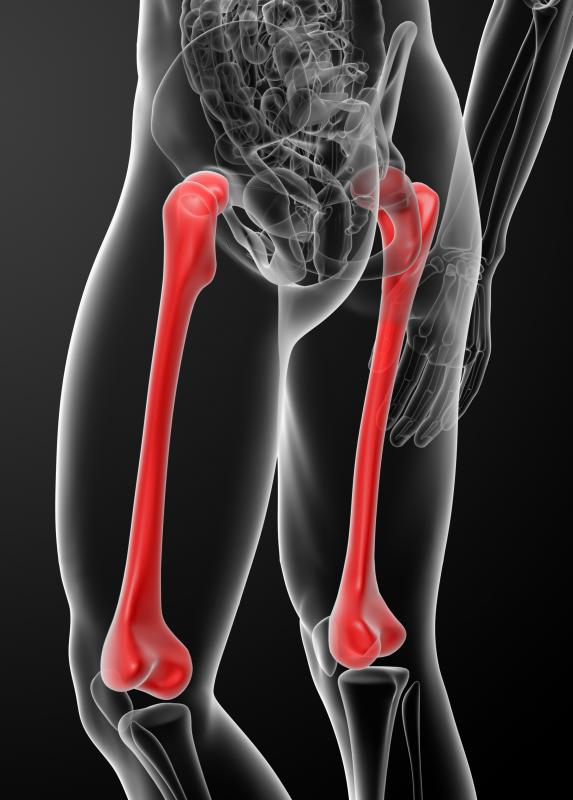At WiseGEEK, we're committed to delivering accurate, trustworthy information. Our expert-authored content is rigorously fact-checked and sourced from credible authorities. Discover how we uphold the highest standards in providing you with reliable knowledge.
What is an Osteoid Osteoma?
An osteoid osteoma is a benign, often solitary, bone tumor or lesion typically not more than 1.5 cm in diameter. It is usually comprised of osteoid and woven bone, which are immature forms of bones. The cause is unknown, and it may arise in almost any part of the skeletal system, including the long bones of the legs, such as the femur and the tibia. Bones of the hands, feet and the spine are also common locations for the osteoid osteoma.
The tumor is commonly seen in Caucasians from ages 5 to 56, and affects men more than women. It is less likely to occur in children younger than 5. The principal complaint in osteoid osteoma is a persistent mild pain which worsens with activity for several months. Intensity of pain increases until it becomes severe enough to disrupt the patient’s sleep. Pain is often relieved by taking pain medications in small doses.

Other symptoms include stiffness and weakness in the adjacent muscles of the affected bone. A limp is also manifested when the lesion develops in the legs. Localized swelling may be present, but there is usually no elevation of body temperature. Osteoid osteoma spine, an osteoid osteoma which grows in the vertebrae of the spine, usually leads to scoliosis, an abnormal curvature of the spine, and torticollis, also known as wry neck or stiff neck.

Osteoid osteoma is usually diagnosed with various radiographic imaging techniques, often depending on the site of the affected area. Computed tomography (CT) and magnetic resonance imaging (MRI) are frequently used for evaluating the precise location of the tumor. CT, however, has an added advantage of also being used in osteoid osteoma ablation, a surgical procedure for removal of the tumor. Single proton emission computed tomography (SPECT) is the method usually requested when the tumor affects the part of the vertebra called the spinous process. Angiography, an imaging technique usually done for evaluation of blood vessels, and doppler ultrasound are sometimes utilized in tumor detection.

The best osteoid osteoma treatment is complete excision or removal of the lesion. This often results in the prompt and permanent relief of pain. Autogenous bone grafting is also sometimes used for treatment. It is a procedure where a replacement bone is obtained from other parts of the patient's body to fill in the area where the defective bone was removed. The lesion will eventually regress if not removed, however, the pain may persist for a number of years.
AS FEATURED ON:
AS FEATURED ON:
















Discuss this Article
Post your comments